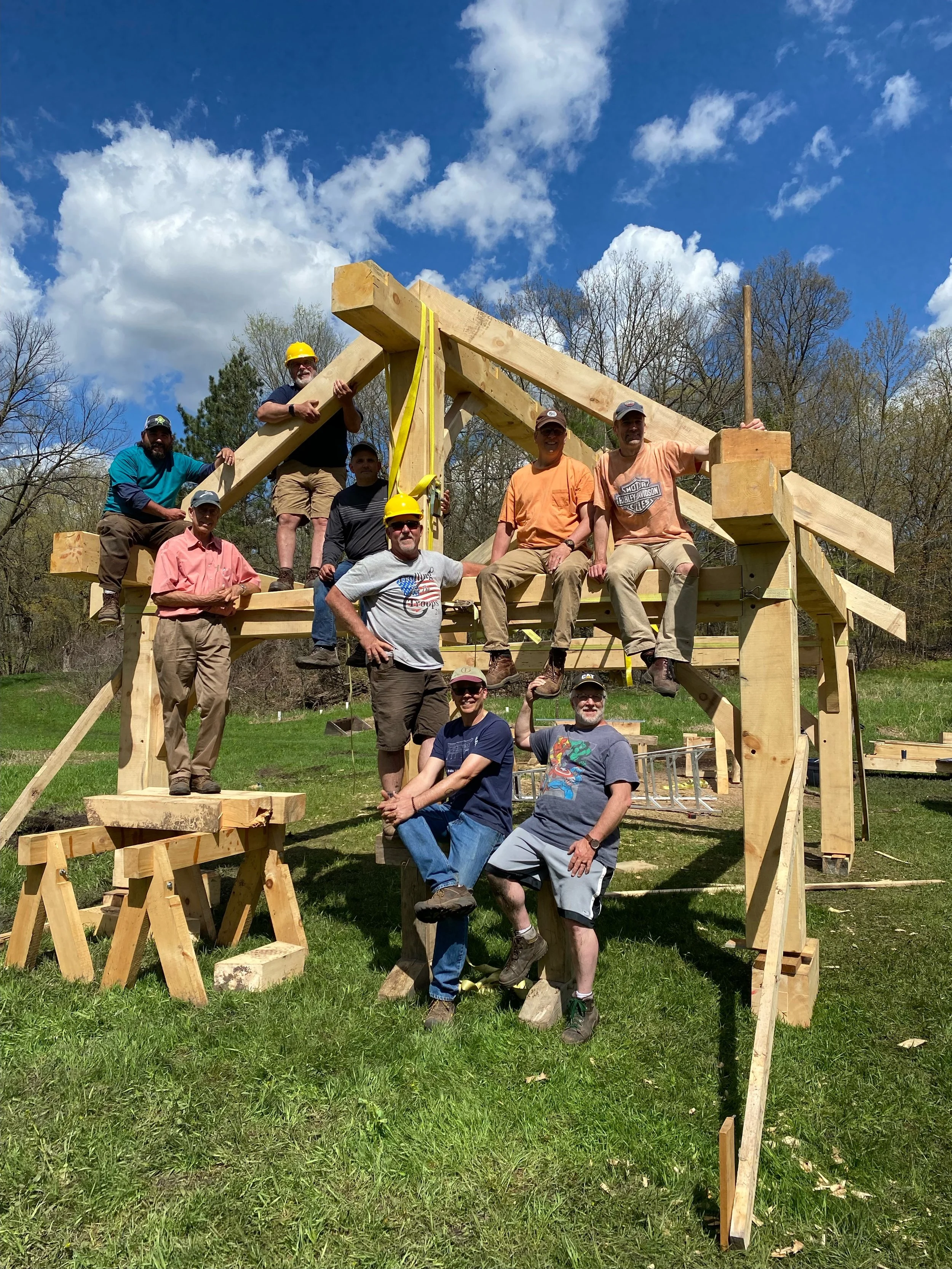Timber Framing Basics: Camaraderie with a capital C
Written by Bob, one of our Timber Framing attendees from May 2022.
When I finished the Timber Framing Class at Avon Hills Folk School, the instructor, Clark, asked what part of it made the biggest impression on me. I hesitated. As Inigo Montoya once said, “Let me explain…No, there is too much. Let me sum up.”
A lot happened over the five days of classes. We were there working for 8 hours a day, so we did a full week of work, and by the end I felt both strong and tired.
If I had to sum up the week, I would have to settle on the word Camaraderie with a capital C. The nature of the work and the characters of the eight people on the team created an environment that was rare. It was more than teamwork. It was more than friendship. It was more than collaboration.
Years ago, when I was in a rough patch of my life, I wrote “helplessness is not the feeling of being helpless, it’s the inability to ask others for help.” I think that’s still true.
At the risk of making a generalization about guys, I don’t think most men are comfortable asking for help. I know I am not.
There is no room for that in timber framing. Almost every aspect of the project required that we ask each other for help constantly throughout each day. I mean, I couldn’t even tip my beam to one side or another without help from one or more of the crew. It was 18 feet long, 10 inches thick and 10 inches wide, and it took about five guys to get it up on my sawhorses. Asking for help became a habit by necessity.
As a woodworker who spends a lot of time alone in my shop, this “asking for help” was jarring. Day One, I didn’t want to do it. Day Two I started to get it–I couldn’t accomplish much, let alone do the work on my beam, without asking for help (a lot of help). Day Three, while my old body was telling me I was crazy, my heart and brain were on board with the whole “ask for help” and feeling really good about it. It was like some part of my awareness woke up.
Day Four it seemed like everything was coming together. By noon, we all had our beams done, which meant we had to finish 16 rafters (only slightly less massive than the beams) by the end of the day because the next day we assembled the building.
The rafters, for me, is where it all came together. No one was working alone at that point. We had teams measuring and marking up the rafters and other teams were cutting and finishing them. Others were stacking and organizing them. No one was assigned to any of the teams. We all just fell into place. We had to bang out these rafters, and we did by the end of the day.
Day Five was the day the project came together. We assembled this 3D jigsaw puzzle into an actual building. It was lifting, trimming, adjusting and even more lifting. When the massive roof beam assembly thumped into place–and I still don’t know how we managed to get it up there–it was like a single heartbeat that attested to the work we had done and the intense camaraderie we had forged.
At the center of this was our maestro, Clark.* He was our instructor, mentor, sensei, designer, folklorist, tool master and lots more. He must have known, must have seen teams like this develop naturally every time he taught the timber framing course. He facilitated us and our work like a zen master, knowing when to step back, when to step in, and when to encourage us to push ourselves further.
No one called us a team. No one exhorted us about the productivity benefits of teamwork and collaboration. We were given tools, direction and a project so big that the only way to get it done was by saying to each other “can I get some help here.”
*He even has a massive 3-inch chisel named Beethoven, a tool so old that it was likely forged back when the composer was alive.

